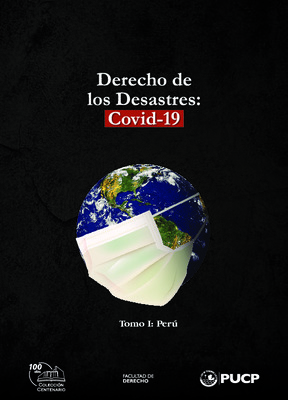| dc.contributor.author | Salmón Gárate, Elizabeth | |
| dc.date.accessioned | 2018-04-12T21:08:50Z | |
| dc.date.available | 2018-04-12T21:08:50Z | |
| dc.date.issued | 2016 | |
| dc.identifier.uri | http://revistas.pucp.edu.pe/index.php/iusetveritas/article/view/16391/16795 | |
| dc.description.abstract | Recently, the interaction between International Human Rights Law (IHRL) and International Humanitarian Law (IHL) has been significantly developed by the jurisprudence of the Inter- American Court of Human Rights (IACtHR). This article analyzes this recent trend from the cases of the Santo Domingo Massacreand Afro communities displaced from the Cacarica River Basin (Operation Genesis) of this tribunal to assert its competence not only to use IHL to interpret the Inter-American human rights instruments but, at the same time, to approach a direct use of humanitarian standards, which creates a gray area between the interpretation and application of such area of Law. In doing so, the Court resorts to the lex specialis if the IHL norm is the most specialized for the case, and uses IHL to a limited extent, only to expand the content of human rights, but not to judge on possible violations of IHL, which results in a methodology of pick and choose of IHL provisions. | en_US |
| dc.description.abstract | Recientemente, la interacción entre el Derecho Internacional de los Derechos Humanos (DIDH) y el Derecho Internacional Humanitario (DIH) ha sido desarrollada significativamente en la jurisprudencia de la Corte Interamericana de Derechos Humanos (Corte IDH). Este artículo analiza la tendencia reciente de los casos Masacre de Santo Domingo y Comunidades Afrodescendientes desplazadas de la cuenca del río Cacarica (Operación Génesis) de este tribunal para afirmar su competencia no solo para utilizar el DIH al interpretar los instrumentos interamericanos de derechos humanos, pero, al mismo tiempo, para aproximarse a la utilización directa de las normas humanitarias, lo que genera una zona gris entre la interpretación y aplicación de esta área del Derecho. Al hacerlo, la Corte recurre a la lex specialis si la norma del DIH es la más especializada para el caso; y utiliza el DIH hasta cierto límite, solamente para expandir el contenido de los derechos humanos, pero no para juzgar posibles violaciones del DIH, lo que resulta en una metodología de pick and choose (selectiva) de las normas del DIH. | es_ES |
| dc.format | application/pdf | |
| dc.language.iso | spa | |
| dc.publisher | Pontificia Universidad Católica del Perú | es_ES |
| dc.relation.ispartof | urn:issn:1995-2929 | |
| dc.relation.ispartof | urn:issn:2411-8834 | |
| dc.rights | info:eu-repo/semantics/openAccess | es_ES |
| dc.rights.uri | http://creativecommons.org/licenses/by/4.0 | * |
| dc.source | IUS ET VERITAS; Núm. 52 (2016) | es_ES |
| dc.subject | International Human Rights Law | en_US |
| dc.subject | International Humanitarian Law | en_US |
| dc.subject | Inter American Court Of Human Rights | en_US |
| dc.subject | Lex Specialis | en_US |
| dc.subject | Derecho Internacional de los Derechos humanos | es_ES |
| dc.subject | Derecho Internacional Humanitario | es_ES |
| dc.subject | Corte Interamericana de Derechos humanos | es_ES |
| dc.subject | Lex Specialis | es_ES |
| dc.title | Aproximación institucional del DIH y el DIDH: tendencias actuales en la jurisprudencia de la Corte Interamericana de Derechos Humanos | es_ES |
| dc.title.alternative | Institutional approach of IHL and IHRL: current trends in the jurisprudence of the Inter-American Court of Human Rights | en_US |
| dc.type | info:eu-repo/semantics/article | |
| dc.type.other | Artículo | |
| dc.subject.ocde | https://purl.org/pe-repo/ocde/ford#5.05.00 | |
| dc.publisher.country | PE | |




